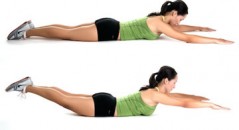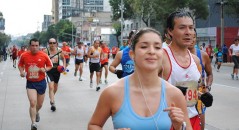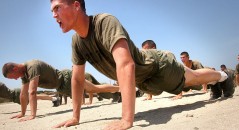 In part 1 of this two-part series on workout and muscle recovery, we discussed why recovery days or even a workout-free day is beneficial to the body. If you missed it, be sure to review the article since we’ll be building on that information here!
In part 1 of this two-part series on workout and muscle recovery, we discussed why recovery days or even a workout-free day is beneficial to the body. If you missed it, be sure to review the article since we’ll be building on that information here!
This part is going to cover some of the best ways to recover quickly from exercise. Plus, if you’ve ever wondered about over-training, I’ll include some clues and information to watch for.
Top tips for workout and muscle recovery
From part 1, workout recovery is influenced by muscle soreness. Typically, a muscle needs anywhere from 24 to 48 hours to recover, which includes repairing and rebuilding. By working it out too soon, tissue breakdown and muscle damage occur instead of the building process.
Rehydrate! Our bodies require lots of water to function. It supports all metabolic tasks and oversees nutrient transfer in the body. After a workout (as well as before a workout), drink plenty of water.
Eat Well. During exercise, your body depletes energy stores. Afterward, you must refuel if you expect the body to recover. Quality food will quickly help to repair tissues, get stronger and be ready for upcoming workouts and exercise.
For another article on what to eat for pre and post-workout nutrition, check out this article!
Get a Massage. For improved circulation and increasing relaxation, a massage can work wonders on a sore body. Inexpensive options include self-massage or using a foam roller. Check out this link for a better explanation of foam rolling and how it can help your body.
Bedtime! Some productivity experts say that lots of sleep is unnecessary. For workout and muscle recovery, this certainly isn’t true! When you sleep, important processes are happening in the body.
A full night of quality sleep is critical for regular exercisers. Tissue growth and repair rely heavily on Growth Hormone (GH). During sleep, your body produces a lot of it.
Try Active Recovery. A study published in Medicine & Science for Sports & Exercise found that to speed up muscle recovery, performing easy, gentle movement improves circulation. By staying active, this encourages lactic acid removal and helps muscles refuel and repair at a quicker pace.
Are you overtraining?
Using these recovery tips will help encourage your body to heal and grow faster. Plus, you’ll be ready for the next training day.
The final component we need to be aware of is whether or not we need a day off right now!
Several signs can point to overtraining. If you’re a regular exerciser, but feel that you’re getting weaker or slower, there’s a chance that you’re training too much.
Working out too much can also cause an increase in fat deposits (mainly in the midsection) as well as muscle wasting. The exercise is clearly burning calories, but it’s mainly burning glucose and muscle tissue. Getting more sleep and reducing your workouts could resolve the issue.
Lastly, overtraining could slightly compromise your immune system. In most cases, this will be a bit extreme because many factors can compromise the immune system. However, if you’re training really hard day-in and day-out and not taking enough rest, staving off the sniffles could be a little bit more difficult.
Don’t forget, though, that regular exercise is critical to a healthy body!
Getting plenty of exercise is important if you want a well-rounded, healthy lifestyle. Remember, it’s just as important to give those muscles some much-needed recovery, too!





